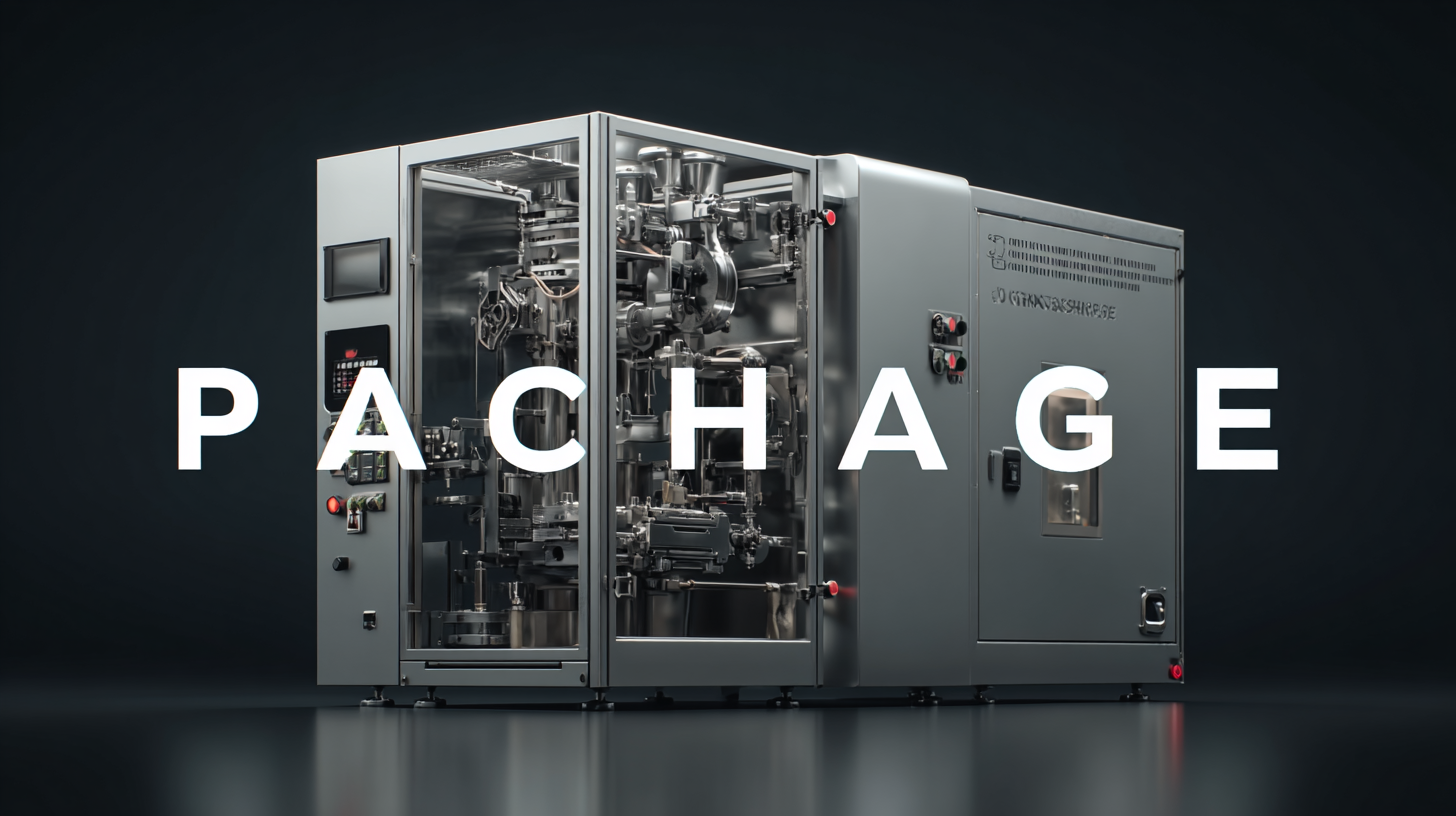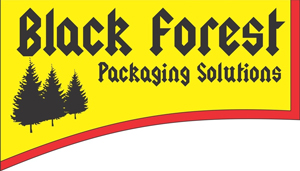Unlocking Efficiency: Exploring the Versatile Applications and Benefits of the Best Package Machines in Global Industries
In today's fast-paced global markets, efficiency and productivity are paramount, leading industries to increasingly adopt advanced technology solutions like package machines. According to a report by the European Packaging Industry, the demand for packaging machinery is expected to grow at a CAGR of 5.1% through 2026, driven by the need for automation and enhanced production capabilities.

Package machines are not just limited to food and beverage sectors; they play a crucial role in pharmaceuticals, consumer goods, and even e-commerce, demonstrating their versatile applications across various industries. The optimization of packaging processes not only reduces material waste but also significantly lowers labor costs, contributing to a more sustainable and economically viable production line. As companies strive for greater operational efficiency, understanding the benefits and applications of these machines becomes essential for staying competitive in an ever-evolving marketplace.
The Rise of Advanced Packaging Machinery in Global Industries
The rise of advanced packaging machinery is significantly transforming global industries, particularly within the semiconductor sector. With the increasing complexity of semiconductor designs and the constant push for miniaturization, manufacturers are now focusing on innovative packaging solutions. This shift is driven by the surging demand for high-performance electronic devices. As advanced semiconductor packaging becomes a focal point, it not only enhances device performance but also helps in managing thermal efficiency and reliability.
Chinese semiconductor equipment manufacturers are at the forefront of this evolution, setting new records and leading the way in advanced packaging technologies. AMEC, NAURA Technology Group, and ACM are key players making substantial contributions to the industry, particularly as the global market for semiconductor manufacturing equipment is projected to reach staggering figures. With the market size expected to surpass $109 billion by 2024, the impact of advanced packaging on productivity and efficiency cannot be understated. As companies adapt to these advancements, they are not only boosting their production capabilities but also paving the way for future innovations in electronics.
Unlocking Efficiency: The Rise of Advanced Packaging Machinery in Global Industries
This chart illustrates the projected market growth rates of advanced packaging machinery across various global industries. As we can see, the food packaging and electronics sectors show significant growth potential, reflecting the increasing demand for efficiency and innovation in packaging solutions.
Key Innovations in Packaging Technology for 2025
As we approach 2025, the global packaging industry is set to experience remarkable innovations aimed at enhancing efficiency and sustainability. The fruit and vegetable processing market, estimated to reach a size of approximately $36.995 billion in 2024, is expected to expand to around $63.609 billion by 2033, growing at a compound annual growth rate (CAGR) of 6.2%. This growth signifies a rising demand for more advanced packaging solutions that not only preserve product quality but also meet increasing environmental standards.
In alignment with these trends, the bulk container packaging market is projected to value $3.635 billion in 2025, with an impressive CAGR of 8.1% anticipated through 2033. This surge illustrates a significant transition towards streamlined and efficient packaging systems. Moreover, innovations in the Form-Fill-Seal (FFS) machine market highlight an emerging need for hygienic and convenient packaging in the food and beverage sectors, with projections suggesting a market size exceeding $8.7 billion as of 2024 and a growth rate of 5.2% anticipated through 2034. These advancements are crucial in supporting the evolving demands of global industries while promoting a more sustainable packaging ecosystem.

Exploring Sustainable Alternatives to Traditional Packaging Solutions
In recent years, the push for sustainability in packaging solutions has become increasingly critical, with many industries seeking to reduce their environmental footprint. According to a report by Smithers Pira, the global sustainable packaging market is projected to reach $500 billion by 2024, growing at a compound annual growth rate (CAGR) of 5.1%. This shift is driven by consumer demand for eco-friendly products and regulatory pressures aimed at reducing plastic waste. Companies are now exploring alternatives such as biodegradable films and compostable materials, which help mitigate issues related to landfill waste and resource depletion.

One innovative example is the use of plant-based packaging derived from renewable resources. Research by the Biodegradable Products Institute indicates that adopting biodegradable packaging can reduce greenhouse gas emissions by up to 40% compared to traditional plastic options. Additionally, advancements in technology have enabled the development of advanced package machines that efficiently incorporate these sustainable materials without compromising production speed or product integrity. By integrating such innovations, industries not only enhance their operational efficiency but also align their practices with the growing global emphasis on sustainability.
The Impact of Automation on Packaging Efficiency and Cost Reduction
The packaging industry is undergoing a significant transformation driven by the advent of Packaging 4.0 technologies. Among the most influential advances are artificial intelligence (AI), the Internet of Things (IoT), blockchain, and robotics. These technologies not only enhance efficiency but also contribute to sustainability. For instance, a recent report indicates that AI can reduce packaging waste by up to 30% through smarter inventory management and process optimization. The IoT enables real-time tracking of goods, leading to a 15% reduction in logistics costs by minimizing delays and inefficiencies.
In the snack and bakery sectors, the integration of advanced packaging technologies is proving vital for controlling overhead costs and enhancing operational performance. By adopting automation, companies can slash labor costs significantly; studies suggest that the implementation of automated packaging lines can decrease labor expenses by as much as 20%. Additionally, the use of robotics in packaging reduces human error and speeds up production cycles, which is crucial in a highly competitive market where speed and precision are pivotal. As such, industry leaders are increasingly investing in these technologies to streamline operations while ensuring cost-effectiveness and higher productivity.
Future Trends: Integrating AI and IoT in Packaging Machinery
The integration of Artificial Intelligence (AI) and the Internet of Things (IoT) in packaging machinery is transforming global industries, enhancing efficiency and accuracy. According to a recent report by MarketsandMarkets, the AI in manufacturing market is projected to grow from $1.41 billion in 2021 to $16.7 billion by 2026, reflecting a compound annual growth rate (CAGR) of 40.5%. This surge is largely driven by the need for automation and smarter decision-making processes in various manufacturing sectors, including packaging.
One of the most promising applications of AI and IoT technologies in packaging machines is real-time monitoring. Sensors embedded in packaging lines can collect data on machinery performance, allowing for predictive maintenance and minimizing downtime. For instance, a study from Grand View Research suggests that predictive maintenance can reduce maintenance costs by 20-25% and increase equipment lifespan by up to 30%. Additionally, using AI algorithms for quality control ensures that every package meets stringent standards, reducing waste and increasing customer satisfaction.
**Tip:** To stay ahead in the competitive landscape, businesses should invest in training their workforce to work alongside emerging technologies. Continuous learning will empower employees to leverage AI and IoT tools effectively, driving overall productivity.
**Tip:** Consider implementing a phased approach when integrating new technologies into existing systems. This gradual transition allows for adjustments and reduces the risk of operational disruptions.
Unlocking Efficiency: Exploring the Versatile Applications and Benefits of the Best Package Machines in Global Industries - Future Trends: Integrating AI and IoT in Packaging Machinery
| Application Area | Packaging Machine Type | Key Benefits | Integration of AI & IoT | Future Trends |
|---|---|---|---|---|
| Food & Beverage | Form-Fill-Seal Machines | High speed, reduced waste, easy operation | Real-time monitoring of production | Smart packaging solutions with predictive maintenance |
| Pharmaceuticals | Blister Packaging Machines | Enhanced safety, compliance, tamper evidence | Automated quality checks and data collection | Personalized medicine packaging systems |
| Cosmetics | Vacuum Packaging Machines | Extended shelf life, preserved quality | Adjustable packaging parameters via AI | Trend towards eco-friendly materials |
| Electronics | Shrink Wrapping Machines | Protection from moisture, dust, and damage | Monitoring system for packaging conditions | AI-driven demand forecasting |
| Logistics | Case Packing Machines | Efficient palletization, reduced labor | Automated inventory tracking | Integration of robotics for enhanced efficiency |
